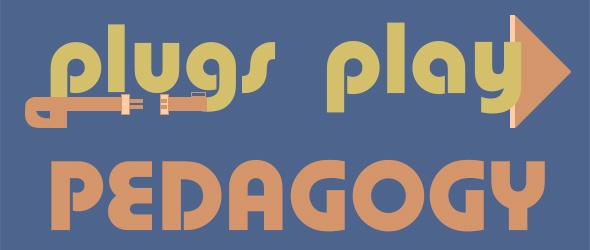
Plugs, Play, Pedagogy
Teaching writing and rhetoric in the 21st century
Episode Archive
-
Episode 12: Video Didn't Kill the Composition Student
Composition classes are getting increasingly multimodal. You can't avoid it--and why would you want to? Visuals, sounds, videos--all are modes of composing that match up with the rhetorical prin...
-
Episode 11: Composing Creatively
Many of us have feet in both the rhetoric/composition community and the creative writing community. To figure out why that is and what we can do about it, I focused this episode around the new b...
-
Episode 10: Exploring the Past
So I made a thing. An audio thing. An audio thing that I wanted to make and loved making, all about history and spaces and the line between being creepy or not creepy--but I was worried that it ...
-
Episode 9: Podcasting with Students
We all know that composition classes are becoming increasingly multimodal. One way teacher/scholars have responded to that turn is by asking students to compose in the serial audio format of pod...
-
Episode 8: Looking into the Fish Tank: Tiny Encounters at CCCC
At the 2015 meeting of the Conference on College Composition and Communication (CCCC), I stuck a mic in people's faces and asked them what they care about.
The answers included ideas ab...
-
Teaching with the Digital Archive of Literacy Narratives
The Digital Archive of Literacy Narratives collects stories of literacy and makes them available online to scholars, students, and anyone else who wants to listen in.
To learn more abou...
-
Locations of Writing
In the September 2014 issue of _College Composition and Communication_, editor Kathleen Blake Yancey opened a special issue on locations of writing with ten vignettes--short reflective pieces wh...
-
Grumble, Grumble: The Pitfalls of Gaming Pedagogy
This is the second in a two-part series of episodes on how games intersect with pedagogies of writing and rhetoric. Its special focus is on the complexities of gaming pedagogies, especially the ...
-
A New Hope for Games in the Classroom
This episode's co-editor Stephanie Vie and I went on a quest to learn about the creative ways that teachers of writing and rhetoric are using games in the classroom. We found ourselves discussin...
-
Using Creative Commons to Make Stuff
I went searching online for teaching-related content that you would want to hear--and I fell into a rabbit hole of ideas about copyright, the public domain, and Creative Commons. On this episod...
 Published with
Published with